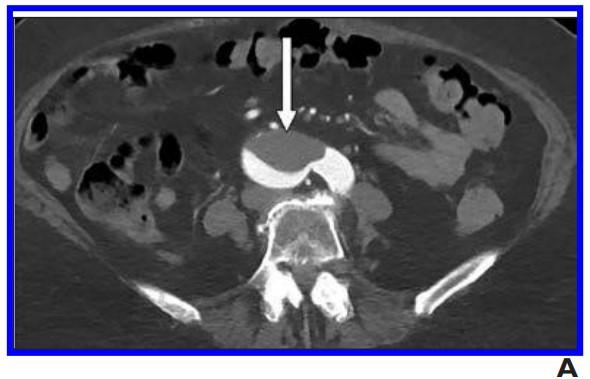Because COVID-19 may present with medium to large arterial and venous abdominal and extremity macrothrombi, radiologists should raise concern for COVID-19 when identifying thromboembolic abdominopelvic findings

Credit: American Roentgen Ray Society (ARRS), American Journal of Roentgenology (AJR)
Leesburg, VA, September 24, 2020–According to an open-access article in ARRS’ American Journal of Roentgenology (AJR), because coronavirus disease (COVID-19) may present with medium to large arterial and venous abdominal and extremity macrothrombi, radiologists should raise concern for COVID-19 when identifying thromboembolic abdominopelvic findings.
Bari Dane of NYU Langone Medical Center in New York City and colleagues at NYU Winthrop in Mineola, New York retrospectively compared 82 patients (58 men, 24 women; mean age 58.8) with COVID-19 who underwent abdominal ultrasound or CT with 82 patients (43 men, 39 women; mean age 53.5) without COVID-19 for thromboembolism and solid-organ infarction.
Nine (11%) patients with COVID-19 had thromboembolic findings (seven men, two women; mean age 67.0). Thromboembolism was described in four of the 38 CT reports (10.5%). Two others described splenic infarctions with patent vasculature (overall positivity rate, 15.8% [6/38]). Three patients had arterial thromboembolism in the aorta or major branches.
Noting one patient without COVID-19 had known portal vein thrombus on CT, “thromboembolic findings occurred more frequently in patients with than without COVID-19 (p = 0.02),” Dane et al. concluded.
Acknowledging this study’s small sample size and single-institution nature, Dane pointed out that the cohort describing patients with “COVID” in the radiology report may not include all patients with COVID-19.
“Additionally,” the authors of this AJR article continued, “not all patients with thromboembolism undergo confirmative imaging, and some may not experience symptoms. Consequently, the prevalence is likely larger than reported.”
###
Founded in 1900, the American Roentgen Ray Society (ARRS) is the first and oldest radiological society in North America, dedicated to the advancement of medicine through the profession of radiology and its allied sciences. An international forum for progress in medical imaging since the discovery of the x-ray, ARRS maintains its mission of improving health through a community committed to advancing knowledge and skills with an annual scientific meeting, monthly publication of the peer-reviewed American Journal of Roentgenology (AJR), quarterly issues of InPractice magazine, AJR Live Webinars and Podcasts, topical symposia, print and online educational materials, as well as awarding scholarships via The Roentgen Fund®.
Media Contact
Logan K. Young
[email protected]
Original Source
https:/
Related Journal Article
http://dx.




